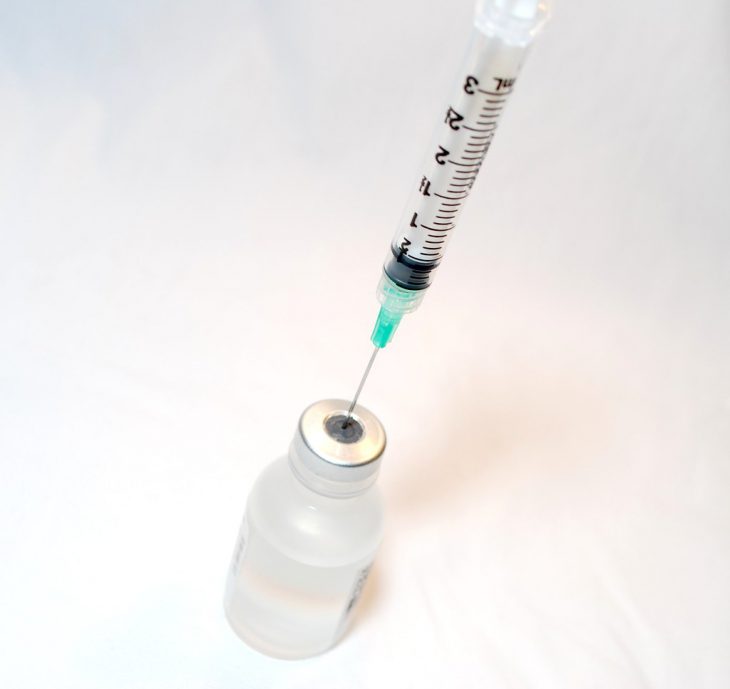In the United States, three vaccines were granted emergency use authorization against the COVID-19 virus between December 2020 and February 2021: Moderna (an mRNA vaccine), Pfizer (an mRNA vaccine), and Johnson & Johnson (J&J – an adenovirus vector vaccine). However, once the Delta wave of the pandemic came to the USA and infections among vaccinated individuals started to increase, a vaccine “booster” dose was introduced to improve immunity.
With all of the different companies producing effective boosters, one question was on everyone’s mind: would it be better to get the same type of booster as the first vaccine series, or would it be better to get a different booster than the first series?
A large group of researchers from across the United States, funded by the National Institute of Allergy and Infectious Disease, decided to perform a Phase 1-2 study to assess the effectiveness of COVID-19 booster vaccines, either staying the same (called homologous boosting), or mixing and matching (called heterologous boosting).
To investigate the best vaccine and booster combinations, a clinical trial was performed at 10 different hospitals and universities in 3 different stages in the United States among healthy adults who had received full vaccination for COVID-19 at least 12 weeks before entering the study (2 doses of either Moderna or Pfizer or 1 dose of the J&J vaccine), and with no history of COVID-19 infection.
The 3 stages of this trial were as follows: Stage 1 – Moderna booster, Stage 2 – J&J booster, and Stage 3 – Pfizer booster. They could then study 9 different combinations of the first vaccine series and the booster to determine the best combination. For example, in Stage 1, participant groups would include Pfizer original series and Moderna booster, Moderna original series and Moderna booster, and J&J original series and Moderna booster. Blood was collected from the participants at day 1 (before the booster was administered), and both 15 and 29 days after booster administration.
The researchers’ main goals were to learn about any adverse events making these booster regimens unsafe, and measure the participants’ blood antibody levels against the COVID-19 spike protein. The researchers measured two types of antibodies – binding antibodies and neutralizing antibodies. Binding antibodies do not prevent viral infection, but they are helpful to diagnose whether someone has been infected or not, while neutralizing antibodies actually help to prevent viral infection. Both binding and neutralizing antibody levels seem to correlate well with protection against COVID-19 in previous studies.
From the initial results of this clinical trial, 458 participants were enrolled between the end of May to mid-August 2021. The boosters were found to be overall very safe. Two serious adverse events were reported that were not related to the booster (kidney failure due to a fall, and gallbladder inflammation). Sixty-four reports of adverse events were related to the booster. Examples of symptoms include constipation, diarrhea, vomiting, pain, and dizziness. Four serious adverse events related to the booster were reported – vomiting, fatigue, and insomnia.
Local pain and tenderness at the injection sites were common and mostly mild, occurring in 71-92% of participants. Muscle aches, fatigue, and headaches were also commonly reported. The following were the main severe side effects reported from the booster vaccine between the 3 study stages: fatigue (2-4.5%), muscle aches (0-3.3%), headache (0.7-3.3%), nausea (0-2.7%), chills (0-3.3%), joint pain (0.6-2%), and fever (0.7-2.7%), and were all most likely to occur within 3 days of booster vaccination.
The researchers found that the overall level of binding antibodies were lower among those who received J&J as their primary vaccine regimen compared to the 2 mRNA vaccines. However, all three types of booster vaccinations resulted in an increase in the binding antibody level. Among those who received an mRNA booster, at least 96% of patients had twice as many antibodies as before their booster, no matter their primary vaccine regimen.
The J&J booster also increased the binding antibody levels in all participants, but those who had the J&J as the primary vaccine had lower levels compared to those who had either of the 2 mRNA vaccines as the primary vaccine. Similar results were shown in the neutralizing antibody responses. Participants had a higher response with the mRNA boosters compared to those who were boosted with J&J, but boosters of any type increased the neutralizing antibody levels.
Overall, all booster vaccine types helped to increase the binding and neutralizing antibody levels to protect against COVID-19, regardless of what primary vaccine participants received. Antibody levels increased before and after boosting. Increases were either similar or higher after the mix and match approach compared to boosting with the same vaccine as the primary vaccine. No safety concerns were found with any of the three types of vaccine boosters.
These results are important to show that no matter what type of first vaccine regimen was administered, any type of booster vaccine will generate an immune response against COVID-19.


